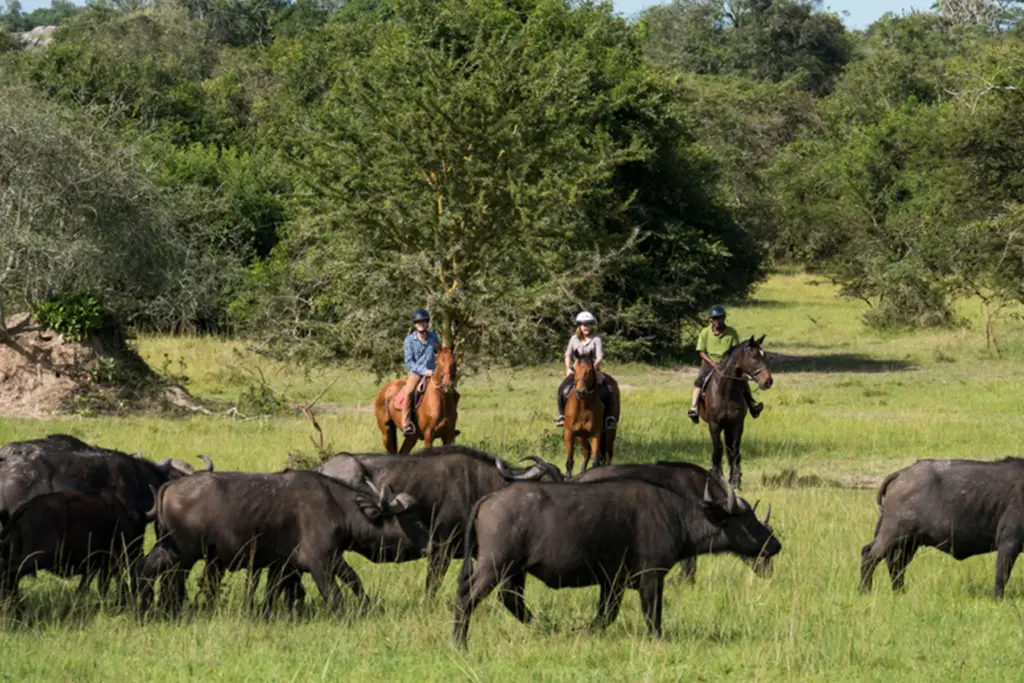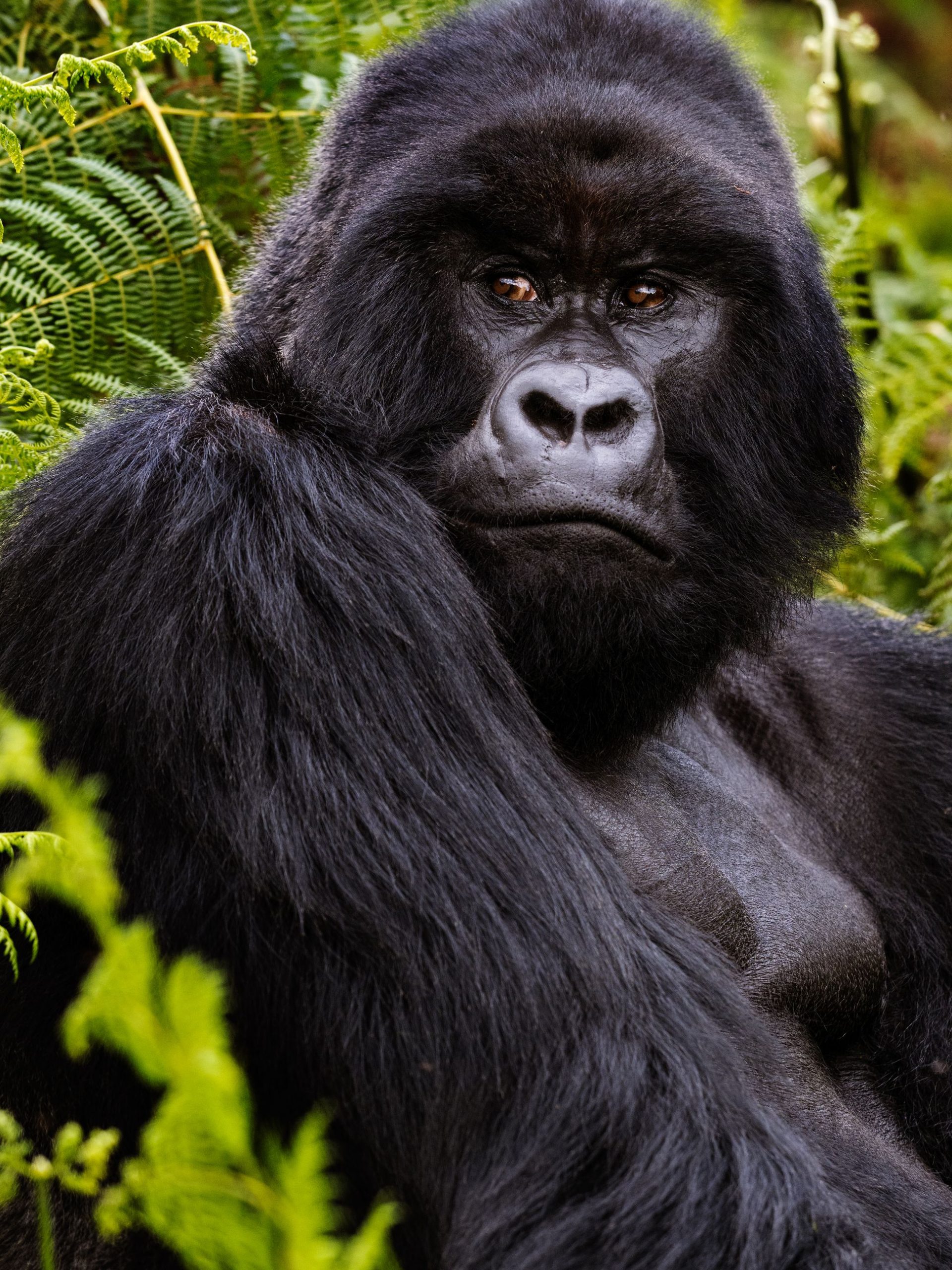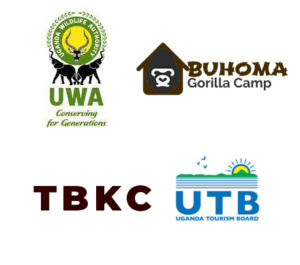
Lake Mburo National Park is a hidden gem of wildlife adventures in western Uganda. It is known for its sophisticated natural endowments encompassing beautiful flora and fauna. The National Park is home to a variety of biodiversity that attracts tourists from all corners of the world. The wildlife experiences and sightings of animals in this National Park are rare in other destinations.
Sounds of the birds chirping, winds whirling and animals living their best life make it a perfect place to relax from the bustling cities. This is why it was nicknamed “The Whispers in the Wild”.
Lake Mburo National Park being the nearest savannah park to Kampala, is frequented by masses of travelers looking to have the best African safari adventures. The park lies on an area of approximately 260 square kilometers in Kiruhura district in the east of Mbarara at roughly 240 kilometers in the west of Kampala.
History of Lake Mburo National Park.
The land where the park lies today was formerly inhabited by the Banyankole-Bahima pastoralists and they had for long enough used it as grazing grounds. The area was originally gazetted as a controlled hunting ground in 1933 but it was later upgraded to a game reserve in 1963 due to the increasing numbers of wild animals in the area.
There were conflicts between the animals and the local people which called for a separate area for protection of the animals. The game reserve was upgraded to National Park status in 1983 by Obote’s government which resulted in the displacement of the pastoralist communities that were living in the area.
The stunning greenery of the vegetation contributes to its uniqueness. The park is made up of savanna grasslands and woodlands that are good grazing grounds for a variety of wild animals. It is these that form a beautiful scenery that is good for sightseeing and photography.
This National Park is also unique in a way that it is near the country’s capital. It is important to remember that Lake Mburo National Park is the nearest savannah park to Kampala city and therefore provides the best getaway adventures to relax in nature.
Attractions in Lake Mburo National Park.
Lake Mburo National Park has a variety of tourist attractions that travelers can feed their eyes with when in its perimeters. These encompass;
Mammals. The National Park is home to a variety of mammals inhabiting has savanna grasslands, especially zebras, hippos, impalas, warthogs, common ellands, African buffaloes, leopards, hyenas, genets, African civets, jackals, servals and Rothschild’s giraffes.
Birds. Lake Mburo National Park is a celebrated bird-watching area and is a habitat for over 300 bird species that can be observed in the tree canopies and along the shores of the lake. These include great blue turacos, Abyssinian ground hornbill, black bee eaters, cinnamons, egrets, hammerkops, African fish eagles, sunbirds, African paradise flycatchers and African darters.
Lush vegetation. This magnificent outback is made up of savanna grasslands and shrubs that are scattered all over. These contribute to the beautiful scenery of the park and are such a huge attraction for sightseeing and photography enthusiasts.
Due to the beautiful endowments, the National Park is a favorable ground for exhilarating activities which encompass;
Game drives. These are usually launched to the deep ends of the National Park in search of the wild animals.
Nature walks. They are conducted under the guidance of the game Rangers and help their travelers explore more of the National Park endowments.
Horseback riding is also carried out in the National Park and helps elevate the experiences of travelers. The experience of watching the beauty of the park while riding the horses in the golden hours is unmatched.
Boat cruises. Boat cruises are yet another exciting activity conducted in the National Park. These are launched on the magnificent Lake Mburo and help travelers reach the deep ends of the park and explore more of the attractions.
Getting to the beautiful Lake Mburo National Park is easier than you can imagine! The easiest route to use is the Kampala – Masaka – Mbarara road. The National Park is located along the highway and it takes about 4 hours and 34 minutes from Kampala city covering a distance of approximately 235.2 kilometers.
The perfect time to visit the breathtaking Lake Mburo National Park is in the dry seasons since they are characterized by fewer interruptions of weather. These are the periods of early June to August for the long dry season and December to February for the short dry season.
Our Partners
Uganda Tourism Board
.
Uganda Wildlife Authority
.
The Buhoma Gorilla Camp
.
The Bwindi Kids Charity
.
What our customers Say ?
ExcellentBased on 21 reviews
 Headspun2023-07-16Unforgettable Rwanda Emerald tailored our 5 day trip to Rwanda to all our many and frequently changing requests without any fuss. Chris, our driver/guide for the duration, could not have been more helpful and professional
Headspun2023-07-16Unforgettable Rwanda Emerald tailored our 5 day trip to Rwanda to all our many and frequently changing requests without any fuss. Chris, our driver/guide for the duration, could not have been more helpful and professional Nic2022-10-25Amazing holidays! Great holidays! Even my special wishes were included into the planning although time was short. Our guide and driver City Tyson Magezi was caring and responsible. We traveled for four weeks and stayed in different accommodations from hut to tent to amazing hotels.
Nic2022-10-25Amazing holidays! Great holidays! Even my special wishes were included into the planning although time was short. Our guide and driver City Tyson Magezi was caring and responsible. We traveled for four weeks and stayed in different accommodations from hut to tent to amazing hotels. Susanne2022-08-19Just amazing It felt so safe and comfortable and exciting to travel with emerald. Our guide was so caring, so experienced and always friendly and an a great mood. He showed us so many animals included lions and leopards. That was just amazing . We saw wonderful landscapes like waterfalls and had contact to people . No Uganda or Eastern Africa without emerald . I m deep in love with Uganda and will come back as soon as possible.
Susanne2022-08-19Just amazing It felt so safe and comfortable and exciting to travel with emerald. Our guide was so caring, so experienced and always friendly and an a great mood. He showed us so many animals included lions and leopards. That was just amazing . We saw wonderful landscapes like waterfalls and had contact to people . No Uganda or Eastern Africa without emerald . I m deep in love with Uganda and will come back as soon as possible. Jose Murta2022-05-13Memorable Family Trip in Uganda Fantastic Trip that exceeded our expectations! Travelled to Uganda with wife and 2 children (9 and 10y old) for 7 days. Since the start (at planning stage) got a great support from Bob (company owner) and Edmund (our guide) via WhatsApp. They tailored a program to our needs including the unforgettable mountain gorillas hike, general hikes to waterfalls, safari including boat trip to see hipos!! Edmund, our guide, always super polite and the kids enjoyed him a lot! All our hotels, meals included in the package so no hassle on this….we just paid for drinks! The only regret I have is not staying one extra day in the Mburo National Park to explore a bit more ;) Memorable trip with so much nature and a super-humble people that made the experience even more enjoyable!! Super recommend!! The whole family just feeling we need to get back to explore more ;)
Jose Murta2022-05-13Memorable Family Trip in Uganda Fantastic Trip that exceeded our expectations! Travelled to Uganda with wife and 2 children (9 and 10y old) for 7 days. Since the start (at planning stage) got a great support from Bob (company owner) and Edmund (our guide) via WhatsApp. They tailored a program to our needs including the unforgettable mountain gorillas hike, general hikes to waterfalls, safari including boat trip to see hipos!! Edmund, our guide, always super polite and the kids enjoyed him a lot! All our hotels, meals included in the package so no hassle on this….we just paid for drinks! The only regret I have is not staying one extra day in the Mburo National Park to explore a bit more ;) Memorable trip with so much nature and a super-humble people that made the experience even more enjoyable!! Super recommend!! The whole family just feeling we need to get back to explore more ;) Dwayne B2022-05-13Great Experience With Emerald!! It was an amazing experience! My guides Lucky and Hillary made me feel as if I was family and took care of everything I needed. They were very knowledgeable as we trekked to gorillas in Bwindi and a ride a wildlife safari through Queen Elizabeth. I learned so much from them about the animals, the terrain and the surrounding people. They we also incredibly helpful in helping me find activities around Buhoma, where I stayed, all of which were great. By the time I left I knew I had made friends who I will continue to stay in touch with. Can’t wait to come back with my family!
Dwayne B2022-05-13Great Experience With Emerald!! It was an amazing experience! My guides Lucky and Hillary made me feel as if I was family and took care of everything I needed. They were very knowledgeable as we trekked to gorillas in Bwindi and a ride a wildlife safari through Queen Elizabeth. I learned so much from them about the animals, the terrain and the surrounding people. They we also incredibly helpful in helping me find activities around Buhoma, where I stayed, all of which were great. By the time I left I knew I had made friends who I will continue to stay in touch with. Can’t wait to come back with my family! Dávid B2022-05-12Feeding python - 9 lions on a tree - leopard vs. lion We saw all animals and extremely special situations in a short period of time, good organization and friendly guide Paul with lots of knowledge.
Dávid B2022-05-12Feeding python - 9 lions on a tree - leopard vs. lion We saw all animals and extremely special situations in a short period of time, good organization and friendly guide Paul with lots of knowledge. Rachmurta2022-05-10Unforgettable trip! We spent one week in Uganda travelling by the guidance of Gorilla Experience safari. The whole experience were definitely above our expectations. Edmand was a friendly, polite and kind guide the whole time!
Rachmurta2022-05-10Unforgettable trip! We spent one week in Uganda travelling by the guidance of Gorilla Experience safari. The whole experience were definitely above our expectations. Edmand was a friendly, polite and kind guide the whole time! Vit Siv2022-04-22Ultimately Unique Experience of Uganda! It was unbelievable unique experience, one in a life time. Everything right from arrival to minor ditals was taken care of, too service! Itinerary was compiled/tailor to our wishes and needs as well as to include as much activities as possible. Tyson was our guide. He is an amazing guide, but even better person. He did an incredible job to put this all together, and make it all happen. We managed to do everything we wanted and even more. Definitely a trip to remember!!
Vit Siv2022-04-22Ultimately Unique Experience of Uganda! It was unbelievable unique experience, one in a life time. Everything right from arrival to minor ditals was taken care of, too service! Itinerary was compiled/tailor to our wishes and needs as well as to include as much activities as possible. Tyson was our guide. He is an amazing guide, but even better person. He did an incredible job to put this all together, and make it all happen. We managed to do everything we wanted and even more. Definitely a trip to remember!! Emmanuel OKalany2022-01-08A rewarding experience for a family visit to queen Elizabeth National Park My family and I had an excellent guided tour to Queen Elizabeth National Park. The itinerary planning provided was good and the costing of items was realistic. The care and hospitality of the team was excellent. They were also flexible to make time adjustments brought about because of traveling with children
Emmanuel OKalany2022-01-08A rewarding experience for a family visit to queen Elizabeth National Park My family and I had an excellent guided tour to Queen Elizabeth National Park. The itinerary planning provided was good and the costing of items was realistic. The care and hospitality of the team was excellent. They were also flexible to make time adjustments brought about because of traveling with children Gordon Y2021-06-23Trip to Kaiso Tonya Game Reserve The guide/driver was too keen to find out my interests. That way, we always had something to talk abouts. Thank you
Gordon Y2021-06-23Trip to Kaiso Tonya Game Reserve The guide/driver was too keen to find out my interests. That way, we always had something to talk abouts. Thank you



